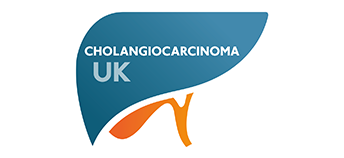Surgery
Surgery to remove the cancer is the only potentially curative treatment for cholangiocarcinoma. But this may involve a major operation and is often not possible. The decision about whether an operation to remove the cancer can be done depends on the results of the diagnostic tests.
If surgery is possible the patient will be referred to a surgeon with a special interest in this rare cancer. The type of operation that is done depends on the size of the cancer and whether it has begun to spread into nearby tissues.
Removal of the bile ducts
If the cancer is at a very early stage (Stage 1), just the bile ducts containing the cancer are removed. The remaining ducts in the liver are then joined to the small bowel, allowing the bile to flow again.
Partial liver resection
If the cancer has begun to spread into the liver, the affected part of the liver is removed, along with the bile ducts.
Whipple’s procedure
If the cancer is larger and has spread into nearby structures, the bile ducts, part of the stomach, part of the small bowel (duodenum), the pancreas, gall bladder and the surrounding lymph nodes are all removed.
Surgery to relieve obstruction (blockage)
If surgery to remove the tumour is not possible, it may be possible to operate to relieve the blockage. This will help to relieve jaundice as the blocked part of the bile duct will be bypassed so that bile can flow from the liver into the intestine.
Another method of relieving a blockage, without an operation, is to insert a tube (stent) into the duct which will hold it open.
If a part of the small bowel (duodenum) is blocked this can cause problems such as vomiting. This may be helped by surgery to connect the stomach to the next section of small bowel (the jejunum) bypassing the duodenum.
Liver transplantation
Complete removal of the liver and bile ducts followed by transplantation of a donor liver has been used in the USA to treat cholangiocarcinoma. Obviously, this is a major procedure and medical professionals are not in agreement about its usefulness for this type of cancer.
“Transplantation for Cholangiocarcinoma – Where are we in 2009”
Lecture given by Chuck Rosen (Professor of Surgery) at the Mayo Clinic, Rochester MN, USA.
STENT INSERTION
A stent is a tube put into the bile duct to hold it open and allow bile to drain away. The tube is about as thick as a ball-point pen refill and 5-10cm long (2-4 inches).
A stent may be put in using an ERCP or occasionally a PTC procedure:
The ERCP method
The preparation and procedure is the same as for ERCP used diagnostically. By looking at the x-ray image the narrowing in the bile duct can be seen. The narrowing is stretched using dilators (small inflatable balloons), and the stent is inserted through the endoscope so that the bile can drain.
The PTC method
The procedure and preparation is as for PTC used diagnostically. A temporary wire is passed to the area of blockage and the stent is guided along the wire. Sometimes a drainage tube (catheter) is left in the bile duct. One end of the catheter is in the bile duct and the other stays outside the body connected to a bag, which collects the bile. This is to help with the insertion of the stent or, sometimes, to enable x-rays to be taken to check the position of the stent after it has been put in place. It is usually left in for a few days. Once the catheter is removed the hole will heal over, usually within two days.
Sometimes a combination of ERCP and PTC may be used.
Antibiotics are given before and after the procedure to help prevent infection, and it is likely that a few days in hospital will be required.
A stent usually needs to be replaced every 3-4 months to prevent it becoming blocked – high temperatures and/or jaundice are symptoms of this. If these symptoms develop, antibiotic treatment may be needed and the stent may be replaced.
Radiotherapy may occasionally be used after surgery for cholangiocarcinoma. This is called adjuvant radiotherapy and is given to try to reduce the risk of the cancer returning.
Cholangiocarcinoma







